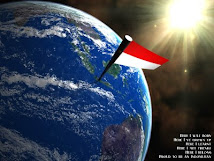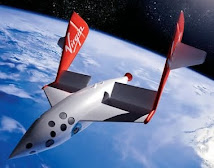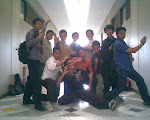"The most important thing in Learning (or Doing) Science is Curiosity"
~Prof. Emmanuel Tsesmelis, Ph.D. on CERN Public Lecture~
Introduction:
CERN atau dalam bahasa Indonesia: Organisasi Eropa untuk Riset Nuklir (singkatan dari bahasa Perancis: Organisation Européene pour la Recherche Nucléaire, bahasa Inggris: European Organization for Nuclear Research) adalah sebuah kompleks laboratorium percepatan partikel terbesar di dunia yang terletak di perbatasan antara Perancis dan Swis, persis di sebelah barat Jenewa.
History
The term CERN is also used to refer to the laboratory itself, which employs just under 2.400 full-time employees and hosts some 10.000 visiting scientists and engineers representing 608 universities and research facilities and 113 nationalities.
The acronym CERN originally stood, in French, for Conseil Européen pour la Recherche Nucléaire (European Council for Nuclear Research), which was a provisional council for setting up the laboratory, established by 12 European governments in 1952.
The acronym was retained for the new laboratory after the provisional council was dissolved, even though the name changed to the current Organisation Européenne pour la Recherche Nucléaire (European Organization for Nuclear Research) in 1954.
According to Lew Kowarski, a former director of CERN, when the name was changed the acronym could have become the awkward OERN, and Heisenberg said that the acronym could " still be CERN even if the name is [not]".
Soon after its establishment the work at the laboratory went beyond the study of the atomic nucleus into higher-energy physics, which is mainly concerned with the study of interactions between particles.
Therefore the laboratory operated by CERN is commonly referred to as the European laboratory for particle physics (Laboratoire européen pour la physique des particules) which better describes the research being performed at CERN.
Bagian Pertama.
Oleh: Iqbal Robiyana, S.Pd.
26 Juni 2012, saya berkesempatan untuk mengikuti kuliah umum di Universitas Indonesia yang bertemakan "CERN and It's Particle Physics Program". Acara tersebut merupakan rangkaian acara kunjungan pertama pihak CERN [1] ke Indonesia. Juga, merupakan rangkaian dari kunjungan 3 hari Prof. Emmanuel Tsesmelis, Ph.D. [2] ke Indonesia. Terselenggara atas kerjasama dan dukungan dari berbagai instansi, seperti LIPI, BATAN, MENDIKBUD, dan KEMENLU.
Kali ini saya tidak akan memaparkan sekelumit kegiatan kuliah umum tersebut, karena untuk mengetahuinya, Anda hanya tinggal cek di webnya Net Sains, KOMPAS dan TEMPO, karena saya lihat ketiga media tersebut hadir di acara tersebut. Yang ingin saya sampaikan disini adalah beberapa point yang saya tangkap dari hasil bincang-bincang (seusai kuliah umum) dengan Pak Suharyo Sumowidagdo, Ph.D yang akrab dipanggil Mas Haryo [3].
Mudah-mudahan menjadi pencerahan untuk siapa saja yang tertarik dengan hal ihwal "dunia" fisika partikel.
Mr. Iqbal: "Mas Haryo, Saya dulu berpikir, riset fisika partikel itu hanya menghasilkan persamaan-persamaan saja tanpa ada manfaatnya secara aplikatif dalam kehidupan nyata....Kenapa tidak meriset bidang-bidang yang aplikatif saja seperti bidang industri, kesehatan, dll? "
Prof. Suharyo, Ph.D. : "Saya harus luruskan kesalah-pahaman ini. Fisika partikel tidak hanya menghasilkan persamaan-persamaan. perlu diketahui bahwa fisika adalah yang mengkaji tentang alam. Konsep/persamaan fisika baru diakui kesahihannya jika telah dikonfirmasi/dibuktikan dengan eksperimen, bahwa konsep/persamaan tersebut sesuai dengan alam.
Kesalahpahaman ini timbul karena di Indonesia tidak ada kegiatan fisika partikel eksperimen. Yang ada adalah kegiatan fisika partikel teoretik. Namun di negara-negara maju terdapat sangat banyak fisikawan partikel eksperimen.
Hasil-hasil dari eksperimen fisika partikel adalah konfirmasi persamaan/teori-teori fisika partikel dan teknologi yang tidak hanya berguna untuk kegiatan penelitian fisika partikel, namun juga bagi kehidupan sehari-hari.
Sehingga, saya merasa bahwa kata "tidak aplikatif" adalah penghakiman yang terlalu dini. Persamaan-persamaan, betapapun rumit dan abstrak, merupakan penggambaran/deskripsi tentang alam di sekitar kita.
Pengetahuan tentang bagaimana alam di sekitar kita merupakan kekuatan. Knowledge is power. Memang suatu konsep terbaru dalam fisika akan selalu tampak abstrak dan jauh dari kenyataan. Namun itu semua beralasan: mereka merupakan sesuatu yang sangat baru sehingga tidak ada satu orang pun di dunia yang tahu apa kegunaannya!
Dengan demikian tidak layak dan terlalu dini untuk menghakimi dengan menjatuhkan vonis ‘tidak aplikatif’.
Saya beri satu contoh saja. Jika kita mengingat sejarah, bagaimana saat Fisikawan sekaligus Matematikawan Skotlandia, J.C. Maxwell berhasil menurunkan keempat persamaan Elektromagnet seabad silam. tidak ada satu pun orang di jaman tersebut yang menduga bahwa listrik dan magnet akan berperan sangat penting di masa depan. Jaman sekarang kita menggunakan listrik untuk penerangan, mendengarkan radio, menonton televisi, memakai internet dengan wireless/Wi-Fi. Kita menerima semua kenikmatan tersebut, namun hanya sedikit yang tahu bahwa semua kenikmatan jaman modern sekarang berawal dari kerja keras Maxwell tentang listrik magnet, yang berpuncak pada empat persamaan matematika tentang listrik dan magnet.
Persamaan-persamaan yang nampaknya abstrak dan rumit, namun mendasari seluruh teknologi modern yang menggunakan listrik magnet.
Singkat kata: Fisika partikel pada saat ini berada pada posisi yang sama dengan persamaan Maxwell 150 tahun yang lalu atau mekanika kuantum 80 tahun yang lalu. Sesuatu yang sangat baru, sangat abstrak, dan tidak seorang pun tahu berapa besar potensi sebenarnya. Kita para fisikawan berpegang pada pelajaran sejarah bahwa kelak di masa depan akan muncul aplikasi dan kegunaan fisika partikel yang saat ini tidak terduga dan terpikirkan oleh kita.
Bersambung:
Note:
[1] CERN, the European Organization for Nuclear Research, is one of the world’s largest and most respected centres for scientific research. Its business is fundamental physics, finding out what the Universe is made of and how it works.
[2] Professor Emmanuel Tsesmelis currently heads the CERN Directorate Office, which plays a key advisory and support role for the Director-General and Senior Management. The Directorate Office’s mission is to provide professional and administrative support, by co-ordinating Directorate-wide positions and by providing a source of policy and strategy counsel. Professor at The University of Oxford.
[3] Suharyo Sumowidagdo, Ph.D, The First Indonesian Physicist who work in CERN, Physics Department UI (S-1 & S-2). Florida State University (S-3), University of California, Riverside (Post-Doctoral). His Research interest is Physics of Top Quark.
European Laboratory for Particle Physics. Includes an introduction of the laboratory, information on experiments being conducted
|
Kunjungi Sekolah Kami:
Nuclear Science & Technology School:
Vision: Nuklir Power sebagai pemercepat Kesejahteraan Umat Manusia.
http://nuclearscienceandtechnology.blogspot.com/























